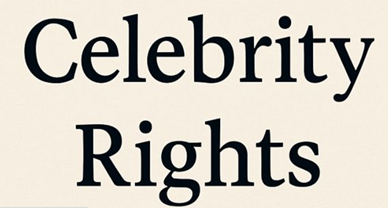Parody under the Copyright Law
Introduction
The word ‘parody’ refers to work that uses humor as a means to critique, ridicule, or expose the flaws in existing work. A parody, by its nature, requires the audience to recognize the original work, and the way the work is critiqued or ridiculed. For this reason, a parody is argued to be dependent upon and is said to borrow from the existing work.
One of the first examples of parodies comes from ancient Greece where writers would imitate the characteristics of poetry, or tragic plays in a humorous context. Parody took its roots in these Greek interpretations of existing works in a humorous manner, which did not necessarily ridicule such earlier work. This is also reflected in the term ‘parody’ itself as the Greek prefix ‘par’ or ‘para’ is used to indicate something next to, besides, or related to another thing and may also be used to refer to something that is opposite or counter to such a thing. Since parodies have taken slightly varied meanings and evolved through time, it is challenging to define or limit their scope. Parodies, today, are even more broadly understood. It may be expressed in any artistic medium, and may not necessarily critique the work in itself – sometimes, it may also be used to criticize or highlight the theme, author, doctrine, philosophy, ideals, or even a particular subject.
[Image Sources : Shutterstock]
It is a general principle that no copyright lies in ideas, subject-matter, themes, movie plots till the expression of the same are different. If presentation of subject-matter or an idea is similar to the original work, then it amounts to copyright violation. In relation to ‘Parodies’, since it is derived from the original work of another writer or artist, it is difficult to draw a line between creative criticism and imitation. This issue was cleared in Civic Chandran case wherein the Court held that ‘the purpose of reproduction of artistic work i.e., counter drama was not misappropriation, to produce a play similar to the original. Rather, the purpose was to criticise the idea propagated by the original drama, and to expose to the public that it had failed to achieve its real object. Since copying was for the purpose of criticism, it amounted to fair dealing and did not constitute infringement of the copyright. The Court also laid down 3-condition test in compliance to which the alleged infringer/ parodist can take the defense of fair use:
- the quantum and value of the matter taken in relation to the comments or criticism;
- the purpose for which it is taken; and
- the likelihood of competition between the two works.
In addition to the 3-condition test, an essential element involved, in relation to parody, is the ‘Intent’. It has been clearly established that making parodies of original work with a motive or intent to exploit it commercially or ride on its goodwill to derive profits shall constitute copyright infringement.
Indian Copyright Act, 1957 provides for exemption of fair use under Section 52(1)(a) which stipulates that fair dealing with any original work, for the purpose of criticism and review, whether of that work or of any other work does not amount to infringement of copyright.
In view of the law laid down, it is clearly inferred that in order to avail the defence of fair dealing the parodist must show that there was no intention, to compete with the copyright holder of the work and to derive profits from such competition and also, the motive of the alleged infringer in dealing with the work must not be improper.
Parody is often taken as a defence in trademark infringement suits. It has become a common to modify brand names, movie titles etc. to create memes, satirical one-liners etc., and will it amount to trademark infringement? This issue was addressed in TATA case by in which the primary issue before the court regarded a violation under the Trademark Act. Greenpeace – an organisation which works for the protection of the environment – openly objected to Tata’s construction of a port by negatively depicting this in the online game Tata Vs Turtles, where turtles were portrayed escaping the Tata logo. Tata filed a petition for defamation and trademark infringement, and sought damages. Greenpeace countered this with the parody defence.
In the case of Pepsi Co v. Hindustan Coca Cola Ltd, wherein the Pepsi Co. sought an interim injunction against Hindustan Coco-Cola for infringement of their copyright on ‘Yeh Dil Maange More’ which was used by Hindustan Coco-Cola as ‘Kyo Dil Maange No More’ in their advertisement. Hindustan Coco-Cola claimed the defence of parody, however, the Court restraining Hindustan Coco cola to use such sentence held that such commercial was a colourable imitation of Pepsi Co.’s commercial.
Conclusion
The test handed down in the R.G. Anand case is the ultimate and all-encompassing test for copyright infringements involving films that are similar to original films in order to prove the levels of plagiarism or likeness. The Supreme Court’s decisions in the case of Shree Ventakesh Films (SVF) v. Vipul Amrutlal Shah (2009) and MRF Limited v. Metro Tyres Limited (2017) which talks about the considerable similarity in any aspect of the cinematographic film to be regarded as a ‘copy’ in terms of exact similarities or substantial similarities that are perceived with ordinary prudence have even strengthened the criteria. Furthermore, in cases of copyright infringement, a new factor of the timing of filing the complaint, as highlighted in Vinay Vats Case (2019), must also be recognized, since the popularity of the subsequent work can often result in infamous litigations. The important facts, as well as the circulation and available duration of both the older and newer work, are used to determine the significance of the time of the filing of the claims. All of these elements are critical in a case of copyright infringement and must be thoroughly examined in order to reach a just and equitable conclusion. Because these factors are derived from the R.G. Anand case, they are appropriately referred to as the ‘locus classicus’, and their importance in finding copyright violations for cinematographic films is enormous.
Author: Tanya Saraswat, in case of any queries please contact/write back to us at support@ipandlegalfilings.com or IP & Legal Filing.
References
- Civic Chandran v/s C. Ammini Amma (1996) 16 PTC 329 (Ker.) (India).
- 2003 (27) PTC 457 (Bom) (DB).



